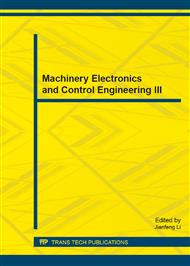p.758
p.762
p.768
p.772
p.776
p.783
p.788
p.792
p.796
Equipment Manufacturing Industry Knowledge Chain Efficiency Prediction Algorithm Based on Improved RBFNN
Abstract:
A new knowledge chain efficiency prediction arithmetic in equipment manufacturing industry in China was proposed, Radial basis function neural network (RBFNN) was designed, and initial temperature numerical calculation arithmetic was adopted to adjust the network weights. MATLAB program was compiled; experiments on related data have been done employing the program. All experiments have shown that the arithmetic can efficiently approach the precision with 10-4 error, also the learning speed is quick and predictions are ideal. Trainings have been done with other networks in comparison. Back-propagation learning algorithm network does not converge until 2400 iterative procedure, and Efficiency design Radial basis function neural network is time-consuming and has big error. The arithmetic in paper can approach nonlinear function by arbitrary precision, and also keep the network from getting into partial minimum.
Info:
Periodical:
Pages:
776-779
Citation:
Online since:
December 2013
Authors:
Price:
Сopyright:
© 2014 Trans Tech Publications Ltd. All Rights Reserved
Share:
Citation:


